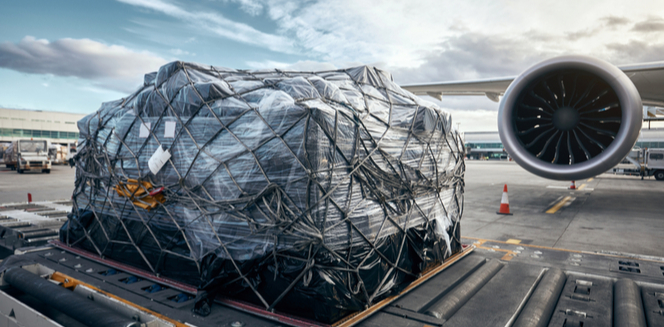Novel Technologies And Tech-Driven Solutions To Change The Face Of Air Freight Business

17 Aug
2021
Technological advancements have changed the way people live, communicate, and transport. From robotics to automation, novel technologies have made their way into almost every sector across the globe and the logistic industry is not an exception.
The volumes sent by air freight have been increasing each year and the emergence of improved technologies have made the industry profitable and sustainable. According to Allied Market Research, the global air freight market is expected to reach $376.8 billion by 2027, registering a CAGR of 5.6% from 2020 to 2027. Significant growth of the e-commerce sector and a rise in demand for fast delivery services have boosted the growth of the market.
Recent market developments and impact of technological advancements:
Technological advancements have transformed the logistic industry in several ways. The advent of augmented reality, artificial intelligence (AI), big data, drones, and robotics are merely the beginning of the future of the air freight industry. In addition, the rapid launch of new solutions by the major organizations in the market has helped the customers to deliver their shipments as quickly as possible.
CEVA Logistics, a global logistic and supply chain company announced the launch of two novel solutions to its air freight offerings. The company’s SKYCAPACTY program would offer its customers access to international air cargo capacity. In addition, the company aims to offer custom transport for no-failure and time-critical shipments. Another major logistic company, DHL Express declared to launch a new cargo airline in Europe. DHL aims to address the strong volume growth and rising customer expectations for faster delivery of e-commerce orders with this launch. Such developments open new opportunities to meet customer demands and reduce the delivery time when the trend of e-commerce has surged over the last few years in European and Asian countries.
On the other hand, several technological trends are gaining popularity in the air freight industry. The demand for driverless vehicles and advancements in drone technology has opened new doors of opportunities for air freight forwarding. For instance, the development of autonomous air travel, unmanned cargo aerial vehicles, and Amazon’s aim for drone deliveries have disrupted the logistics industry and offered a glimpse of what the future could look like.
The air freight industry has been undergoing several changes, especially paper to digital transformation. The benefits of smart data sharing and the availability of apps and software for freight forwarders allow customers to track their packaging and keep complete track of their orders without the use of paper and printed materials. Moreover, it eliminates the possibility of human errors.
However, the regulations regarding air freight need to change and adapt with time. Technological innovations have the potential to make the air freight business smarter and more transparent and the shipping regulations would witness several changes in the coming years. In fact, the demand for air freight would skyrocket once the shipping regulations and state-of-the-art technologies go hand in hand.

Koyel Ghosh
Author’s Bio- Koyel Ghosh is a blogger with a strong passion and enjoys writing in miscellaneous domains, as she believes it lets her explore a wide variety of niches. She has an innate interest in creativity and enjoys experimenting with different writing styles. A writer who never stops imagining, she has been serving the corporate industry for the last five years.
Avenue: Entire Library membership of Allied Market Research Reports at your disposal
- Avenue is an innovative subscription-based online report database.
- Avail an online access to the entire library of syndicated reports on more than 2,000 niche industries and company profiles on more than 12,000 firms across 11 domains.
- A cost-effective model tailored for entrepreneurs, investors, and students & researchers at universities.
- Request customizations, suggest new reports, and avail analyst support as per your requirements.
- Get an access to the library of reports at any time from any device and anywhere.
Related Post
-
How are Submarine Cables Transforming Global Connectivity with Enhanced User Experience?
-
Endoscopy Procedures: Transformations in Techniques and Applications
-
AI-Powered Video Analytics: How the Product Actually Works for enterprises
-
Painting Robots: Transforming Precision Coating and Creative Applications
-
Innovations in Pharmacovigilance Systems Advancing Patient Safety
-
Understanding Edge Security: Keeping Data Safe Near the Source
-
Exploring the Use and Advancements of 3D Laser Scanners in Professional Applications
-
Reinforcing Industrial Controls with Smarter Tools and Training








